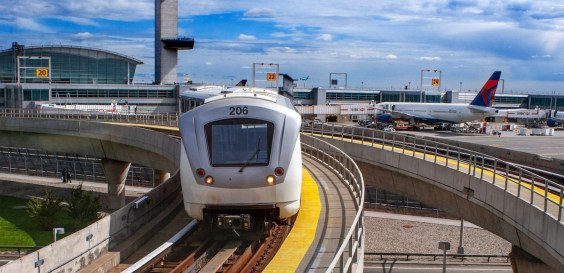
A coalition of advocacy groups, local government agencies, and cycling clubs called on cities across Santa Clara and San Mateo counties to adopt Vision Zero goals to eliminate traffic fatalities at the recent Silicon Valley Bike Summit in Palo Alto.
In the ten years from 2004 through 2013, 1,236 people lost their lives in car crashes in the two counties, according to the California Highway Patrol. Every year, more than 1,800 people are injured by drivers while walking or biking. In San Jose, the region's largest city, 44 people were killed in car crashes in 2014, and another 30 people were killed in the first eight months of 2015 - with pedestrians accounting for more than half the victims.
"No fatality and no major life-altering injury on our roadways is acceptable," said Silicon Valley Bicycle Coalition (SVBC) Deputy Director Colin Heyne.
SVBC and California Walks released their Vision Zero Toolkit [PDF] at the summit, a how-to guide for advocates and city officials based on the "Five E's" - Engineering, Education, Enforcement, Encouragement, and Evaluation. The guide describes how cities can prevent serious traffic injuries and deaths resulting from car crashes, based on current best practices in other cities and US Department of Transportation recommendations.
"The Vision Zero Toolkit outlines key steps that city staff and policymakers can take to adopt and implement a Vision Zero policy and plan, in an effort to improve traffic safety in their communities," wrote California Walks Planning and Policy Manager Jaime Fearer in a press release. "Vision Zero policies recognize that every traffic collision is preventable, whether through engineering, education, or enforcement."

The network of highways and wide arterial streets in both counties creates hazardous conditions for walking and bicycling, discouraging many residents from taking even short trips on foot or by bike. Many other people have no choice but to brave these dangerous streets without a car.
"In San Mateo County, we are seeing people of color being impacted the most, more than anyone else, older adults, and also in particular youth," said County Health System Senior Community Health Planner Jessica Osborne. "African-Americans make up 32 percent of all bicycle and pedestrian deaths, but only represent 3 percent of our county's population... 39 percent of collisions in San Mateo County are happening within a quarter mile of schools."
At the summit, Santa Clara County public health officials announced their new report "Bicycle Transportation & Safety in Santa Clara County 2015" [PDF]. County Public Health Department Health Education Specialist Susan Lowery said the report is intended to "collect and analyze existing data to have a better understanding of bicycling transportation and of what collision factors are at play and contributing to injuries and fatalities." It includes a variety of collision data and public health indicators by city and by year, and a set of recommendations for cities and county agencies to reduce the number of injuries and fatalities resulting from bike collisions.
San Francisco led the SF Bay Area by first adopting a Vision Zero goal, pledging in early 2014 to eliminate traffic deaths within ten years. This year, the city of San Mateo and San Jose also adopted Vision Zero goals
Street safety advocates are targeting both Santa Clara and San Mateo counties, as well as the largest cities in the two counties, as the next local governments that should adopt Vision Zero programs. Participation of county departments in the effort to eliminate traffic fatalities is critical because many of the deadliest roadways are maintained by the counties, such as Almaden and Capitol Expressways in San Jose.




